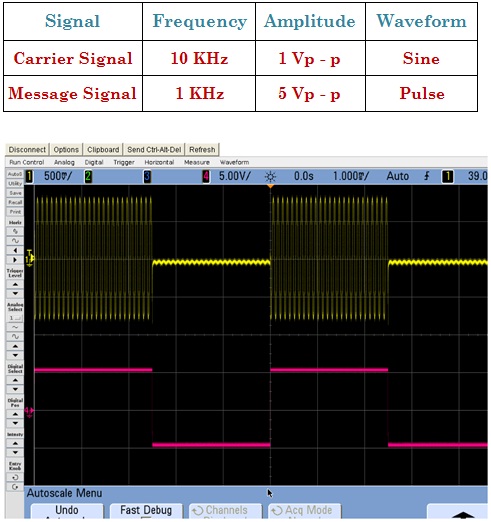 |
 |
 |
In the above Fig.1, the waveforms obtained represents that when the digital signal is HIGH then the ASK signal has logic ‘1’ i.e. the logic high will show higher frequency of signal with some amplitude but when the digital signal has logic LOW i.e. ‘0’ then the ASK signal will have lower amplitude (0 V).
 |
 |







